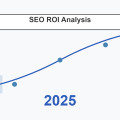If you’re a content creator, business owner, or marketer right now, chances are you’re feeling a bit anxious about AI-generated content and Google’s recent algorithm changes. The March and June 2025 updates have left many websites scrambling, with some seeing traffic drops of up to 70% whilst others have watched their profits plummet by 75%.
So here’s the burning question: Should you use AI for your website content and blog posts?
The answer isn’t a simple yes or no. It’s far more nuanced than that. Google isn’t waging war against AI itself—they’re going after lazy, manipulative content practices. The search giant’s focus remains firmly on quality, helpfulness, and user intent, regardless of how the content was created.
In this post, we’ll break down what Google’s latest updates actually mean for AI content, examine the real data behind the penalties, and give you a clear roadmap for using AI effectively without risking your search rankings. Whether you’re already using AI tools or considering them, you’ll walk away with practical strategies that actually work in 2025’s search landscape.
Understanding Google’s True Position on AI Content
Let’s clear up the confusion straight away. Google has explicitly stated that they don’t penalise AI content simply because it was created by artificial intelligence. In their own words: “Not all AI-made content is bad. AI has long been used to make helpful things like sports scores and weather reports.”
The search engine’s official stance is that content quality and usefulness matter more than the creation method. Whether a human wrote it, an AI generated it, or it was a collaboration between both doesn’t determine its ranking potential.
Here’s where it gets interesting though.
Whilst Google doesn’t have a blanket ban on AI content, they’re absolutely ruthless when it comes to AI-generated material that’s produced “at scale for the primary purpose of manipulating search rankings.” They’re specifically targeting content that’s “low-quality, unoriginal, and unhelpful”—and unfortunately, that describes a significant chunk of AI-generated content flooding the web.
The key mechanism behind this crackdown is Google’s “Scaled Content Abuse” policy, which directly targets mass-produced, low-value content that’s often facilitated by AI tools. If you’re churning out dozens of generic articles without adding genuine value, you’re in the firing line.
What the March & June 2025 Updates Actually Revealed
The data from Google’s 2025 updates tells a fascinating story about the direction of search. Let’s break down what actually happened.
The March 2025 Core Update: A Broad Cleanup
Rolling out from March 13 to March 27, this update was described as “regular” by Google, but the SEO community felt anything but regular volatility. The update focused heavily on “Helpful Content” principles and strengthened E-E-A-T (Experience, Expertise, Authoritativeness, Trustworthiness) signals.
What made this update particularly significant was Google’s aggressive de-indexing of millions of pages deemed low-quality. Empty category pages, doorway pages, duplicate content, and “zombie” blog posts—those sad articles with no traffic or backlinks—were systematically removed from search results.
Three new spam policies were introduced or reinforced:
- Expired Domain Abuse: Buying expired domains and stuffing them with irrelevant content
- Site Reputation Abuse: Authoritative sites hosting unrelated third-party content with minimal oversight
- Scaled Content Abuse: Mass-producing content primarily for ranking manipulation
The June 2025 Updates: Precision Strikes
June brought two distinct updates. First, a Spam Update (June 20-27) refined existing spam detection methods, reiterating common violations like automated content and thin, duplicated material.
Then came the June Core Update on June 30, which was described by the community as having a “sharper” and “precise” impact compared to March’s “wide” effect. This update integrated the helpful content system directly into Google’s core ranking logic, judging content “by page not by brand.”
The most significant development? “The Great Decoupling.”
This phenomenon describes how websites began seeing increased impressions but dramatically reduced clicks. The culprit? Google’s AI Overviews (formerly Search Generative Experience) started answering queries directly in search results, reducing click-through rates by 18-64% for affected queries.
SEOs have expressed considerable frustration with this shift, with some sarcastically referring to “AIO” as “Artificial Infringement Overviews.” The sentiment is understandable—sites might be cited in AI answers but lose the valuable traffic that traditionally came with rankings.
How to Use AI Ethically and Effectively for SEO
The key to success with AI content lies in understanding it as a tool that amplifies human expertise, not one that replaces it. Here’s how to get it right.
Human Oversight Isn’t Optional—It’s Critical
Every piece of AI-generated content needs significant human input. This means:
- Heavy editing and fact-checking
- Adding personal insights and original thinking
- Infusing real-world experience and expertise
- Checking for accuracy and relevance
The Quality Rater Guidelines now specifically look for indicators of low-effort AI content, including widely known facts, significant overlap with sources like Wikipedia, and those telltale phrases like “As an AI language model.”
Build Genuine E-E-A-T Signals
Google’s emphasis on Experience, Expertise, Authoritativeness, and Trustworthiness has never been stronger. Here’s how to demonstrate these qualities:
Experience: Share real-world examples, case studies, and personal anecdotes. If you’re writing about digital marketing, include specific campaign results or client stories.
Expertise: Include author bios with relevant credentials, cite reputable sources, and demonstrate deep knowledge of your subject matter.
Authoritativeness: Build relationships within your industry, earn quality backlinks, and get mentioned by other respected publications.
Trustworthiness: Maintain transparent About Us and Contact pages, include privacy policies, and display customer testimonials or reviews.
Create People-First Content
This means solving real problems for your readers rather than trying to game search algorithms. Ask yourself:
- Does this content genuinely help someone?
- Am I providing information that can’t be found elsewhere?
- Would I find this useful if I weren’t trying to rank for keywords?
Avoid thin, generic content that merely restates commonly known information. Instead, offer unique insights, original research, or fresh perspectives on familiar topics.
Optimise Strategically for AI Overviews
Since AI Overviews are here to stay, create content that works within this new reality:
- Use clear H2 and H3 headings that directly answer questions
- Structure content to support decision-making rather than just providing basic information
- Implement FAQ schema markup to increase chances of being featured
- Focus on content that encourages further exploration beyond a simple answer
Practical Steps to Audit and Improve Your Website
If you’re concerned about your current content strategy, here’s a systematic approach to assessment and improvement.
Conduct a Thorough Content Audit
Use Google Search Console to identify pages that have lost traffic or rankings since March. Look for patterns:
- Are certain types of content consistently underperforming?
- Do you have multiple pages targeting similar keywords?
- Which pages have little to no organic traffic?
Take Action Based on Your Findings
Refresh and Improve: Update outdated information, add depth to shallow articles, and incorporate fresh data or insights. A yearly refresh of evergreen content with new statistics can signal continued relevance.
Consolidate Wisely: Combine multiple thin articles into comprehensive, authoritative guides. This approach often performs better than having several weak pages competing against each other.
Remove Without Hesitation: Delete or significantly rework pages that offer little value. This includes empty category pages, duplicate content, and articles that haven’t attracted any meaningful engagement.
Strengthen Technical Foundations
Whilst content quality is paramount, technical health supports everything else:
- Check loading speeds across all devices
- Verify mobile responsiveness
- Review internal linking structure
- Monitor Google Search Console for crawling issues or manual actions
Diversify Your Traffic Sources
This cannot be overstated: reduce your dependence on Google organic search. The rise of AI Overviews means traditional organic traffic patterns are shifting permanently.
Build email lists, develop social media presence, create direct relationships with your audience, and explore referral traffic opportunities. Having multiple traffic sources provides crucial protection against future algorithm changes.
Moving Forward in the New SEO Landscape
The March and June 2025 updates represent more than algorithm tweaks—they signal a fundamental shift in how search works. AI Overviews are changing user behaviour, and Google’s quality standards continue rising.
Success in this environment requires patience and persistence. Recovery from algorithm impacts takes time, and knee-jerk reactions rarely help. Instead, focus on creating genuinely helpful content that demonstrates real expertise and serves your audience’s needs.
AI tools remain valuable for research, drafting, and optimisation, but they must be wielded thoughtfully. The content that succeeds will be that which combines AI efficiency with human insight, creativity, and authority.
The bottom line? Use AI to enhance your content creation process, not to replace human expertise. Focus on quality over quantity, prioritise user value over search manipulation, and build a diversified digital presence that doesn’t rely solely on Google’s goodwill.
If you’re feeling overwhelmed by these changes or need help conducting a comprehensive content audit, our team specialises in helping businesses navigate the evolving SEO landscape. We can help you develop a strategy that leverages AI effectively whilst building the kind of authority and trust that thrives in Google’s new environment.
For those who want to dive deeper into the specifics of Google’s March and June 2025 updates, including detailed data and community observations, you can access our Google Updates and AI Content_ that informed this analysis.






